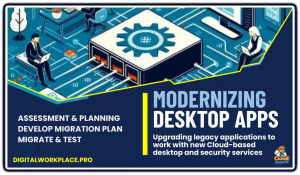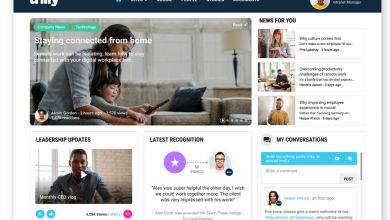How to Migrate Apps to Intune in 3 Clicks | Rimo3
Rimo3 Cloud leverages automation and Azure Compute so you can perform application migrations to Intune at scale, even when you are constrained by limited time and staff.
 Organizations might want to migrate their applications to Microsoft Intune for several compelling reasons, as it offers a robust, cloud-based solution for managing devices and applications.
Organizations might want to migrate their applications to Microsoft Intune for several compelling reasons, as it offers a robust, cloud-based solution for managing devices and applications.
Intune allows organizations to manage mobile devices, desktops, and applications from a single platform, simplifying IT operations.
Intune supports Mobile Application Management (MAM) and Mobile Device Management (MDM), allowing IT teams to deploy, update, and secure apps efficiently. Organizations can enforce policies like restricting copy-paste between apps or requiring authentication, even on unmanaged devices.
Being cloud-native, Intune eliminates the need for on-premises infrastructure, reducing maintenance costs and enabling remote management. This is especially valuable for organizations with distributed workforces or those adopting hybrid work models.
Rimo3
Rimo3 offers an automated solution, which enables you to meet an aggressive SCCM application migration to Intune timescale with time to spare.
This is achieved through Azure Compute combined with Rimo3 platform automations that allow the compute to scale to meet your timescales and needs. The alternative is human IT staff spending between 30 minutes to an hour per application to manually add it to Intune.
Rimo3 Cloud can migrate a simple application in under a minute and multiple applications in parallel. This automated process starts by wrapping your application as an Intune Win32 application, creating application object in Intune using the metadata Rimo3 discovered from your application in SCCM.
Finally, the Rimo3 platform automates the upload of the intunewin file to your Intune tenant. Now you have an application in Intune that is ready for assignment.
 Connection to Rimo3 Solutions
Connection to Rimo3 Solutions
Rimo3’s solutions, particularly its Workspace360 platform, directly operationalize the iWLM vision Halvadia describes, providing CIOs with practical tools to manage modern workspaces. Here’s how Rimo3’s offerings align with the article and the remote work trend:
- Automation Across the Lifecycle: Rimo3 automates critical tasks like application discovery, packaging, validation, and patching—core components of iWLM. For example, Workspace360 streamlines migrations (e.g., Windows 10 to 11, SCCM to Intune, Citrix to Azure Virtual Desktop/Windows 365), reducing manual effort and downtime. This supports remote work by ensuring employees have uninterrupted access to updated, compatible tools, a best practice for distributed teams.
- AI-Driven Insights and Visibility: Rimo3’s patented Intelligent Smoke Test and Validate360 module provide automated compatibility and performance assessments, giving CIOs real-time insights into how applications and updates will behave in specific environments. This predictive capability, highlighted in the article, minimizes risks—like the July 2024 CrowdStrike incident—ensuring stability for remote workers relying on cloud-based systems.
- Support for Hybrid and Virtual Environments: Rimo3 facilitates transitions to platforms like Azure Virtual Desktop (AVD) and Windows 365, which are central to virtual working. Its ability to package applications in modern formats (e.g., MSIX, Intune Win32) and validate them across physical, virtual, and cloud setups aligns with iWLM’s goal of managing diverse workspaces, enabling seamless experiences for hybrid employees.
Patch Management with Patch360: The article’s focus on reducing complexity through automation is embodied in Rimo3’s Patch360, which offers a catalog of over 25,000 applications and validates patches contextually for specific environments. This ensures security and compliance—key concerns in remote setups—without disrupting workflows, addressing a major pain point for IT teams supporting distributed endpoints.
Employee-Centric and Agile Outcomes: Rimo3’s data-driven approach, including integrations with tools like ServiceNow or Power BI via its API, allows CIOs to tailor workspaces to user needs, enhancing productivity and satisfaction. This agility supports the trend of personalized digital workplaces, freeing IT staff from mundane tasks to focus on strategic goals, as Halvadia envisions.
In practice, Rimo3’s solutions have delivered tangible results: a global enterprise migrated 1,742 applications in eight days, achieving 97% faster migrations, while another reduced patch management risks by automating readiness assessments.



